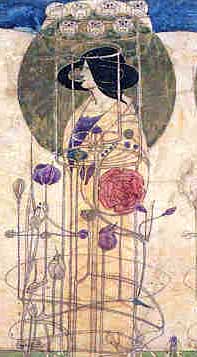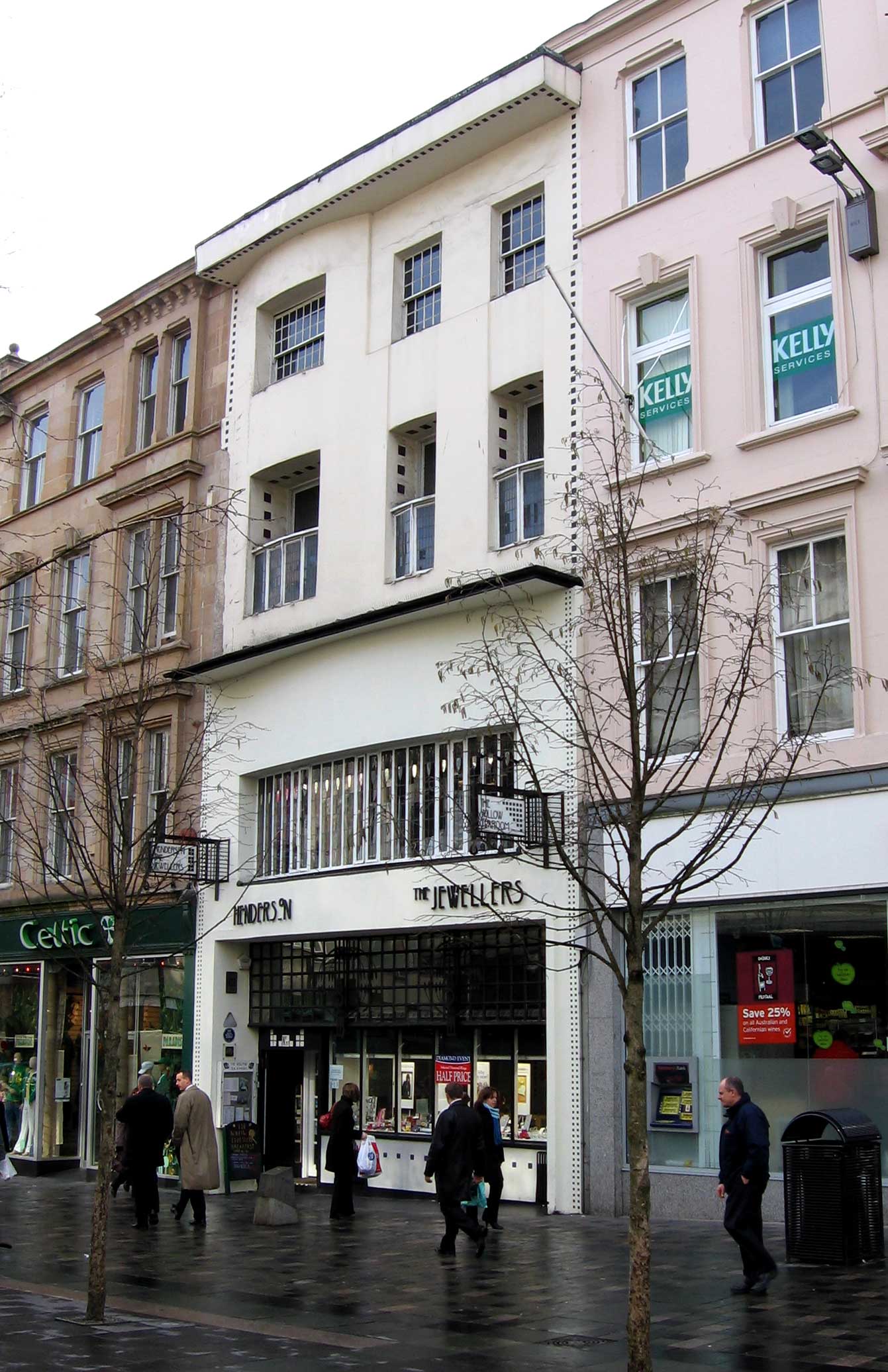|
Hermann Muthesius
Adam Gottlieb Hermann Muthesius (20 April 1861 – 29 October 1927), known as Hermann Muthesius, was a German architect, author and diplomat, perhaps best known for promoting many of the ideas of the English Arts and Crafts movement within Germany and for his subsequent influence on early pioneers of German architectural modernism such as the Bauhaus. Early life Muthesius was born in 1861 in the village of Großneuhausen near Erfurt and received early training from his father, who was a builder. After a period of military service and two years studying philosophy and art history at Frederick William University in Berlin, he enrolled to study architecture at Charlottenburg Technical College in 1883, while also working in the office of Reichstag architect Paul Wallot. Early career Following completion of his studies, Muthesius spent 1887 to 1891 working for German construction firm Ende & Böckmann in Tokyo. [...More Info...] [...Related Items...] OR: [Wikipedia] [Google] [Baidu] |
Großneuhausen
Großneuhausen is a municipality in the Sömmerda district of Thuringia, Germany Germany,, officially the Federal Republic of Germany, is a country in Central Europe. It is the second most populous country in Europe after Russia, and the most populous member state of the European Union. Germany is situated betwee .... References Sömmerda (district) Grand Duchy of Saxe-Weimar-Eisenach {{Sömmerda-geo-stub ... [...More Info...] [...Related Items...] OR: [Wikipedia] [Google] [Baidu] |
Embassy Of Germany In London
The Embassy of Germany in London is the diplomatic mission of Germany in the United Kingdom. The embassy is located at Belgrave Square, in Belgravia. It occupies three of the original terraced houses in Belgrave Square and a late 20th-century extension. History The Prussian Consul-General was housed at 9 Carlton House Terrace in the so-called ''Prussia House''. During Hans Wesemann's 1936 trial over the kidnapping of pacifist writer Berthold Jacob from Basel, Switzerland, Wesemann admitted that the German Embassy in London had been used as a base for the activities of the Gestapo, the Nazi secret State police. In 1937, Ambassador Joachim von Ribbentrop hosted 1,000 people, including Prince George, Duke of Kent and his wife, Maria, Duchess of Kent, at the reopening of the Embassy at Carlton House Terrace which had undergone a £100,000 renovation. In September 1939, the German Embassy burned its files following the onset of World War II. Post World War II After World War I ... [...More Info...] [...Related Items...] OR: [Wikipedia] [Google] [Baidu] |
Catherine Cranston
Catherine Cranston (27 May 1849 – 18 April 1934), widely known as Kate Cranston or Miss Cranston, was a leading figure in the development of tea rooms. She is nowadays chiefly remembered as a major patron of Charles Rennie Mackintosh and Margaret MacDonald (artist), Margaret MacDonald, in Glasgow, Scotland. The name of ''Miss Cranston's Tea Rooms'' lives on in reminiscences of Glasgow in its heyday. Background Her father, George Cranston, was a baker and pastry maker and, in 1849, the year of her birth, he became proprietor of the ''Edinburgh and Glasgow Railway Chop House and Commercial Lodgings'' at No. 39 George Square in Glasgow city centre. The hotel was renamed the Royal Horse, then renamed again in May 1852 to become ''Cranston's Hotel and Dining Rooms'', offering: :"Convenient Coffee room and detached Smoking Rooms on Ground Floor, commodious Commercial Room and Parlour, comfortable Bed-rooms and Baths, &c. Coffee always ready. Cigars, wines, spirits, ales, ... [...More Info...] [...Related Items...] OR: [Wikipedia] [Google] [Baidu] |
Dekorative Kunst
''Dekorative Kunst'' (meaning ''Decorative Art'' in English) was a German avant-garde art magazine published from October 1897 to 1929. The magazine promoted the Jugendstil or Art Nouveau style and was founded by Julius Meier-Graefe. The publisher of the magazine was Alexander Koch. It was based in Munich Munich ( ; german: München ; bar, Minga ) is the capital and most populous city of the German state of Bavaria. With a population of 1,558,395 inhabitants as of 31 July 2020, it is the third-largest city in Germany, after Berlin and ... where it was published on a monthly basis. It had a sister magazine, '' Die Kunst'', which was a fine arts magazine. In 1929 the magazine was renamed '' Das schöne Heim''. References External linksSix issues of ''Dekorative Kunst'' pub ... [...More Info...] [...Related Items...] OR: [Wikipedia] [Google] [Baidu] |
Willow Tearooms
The Willow Tearooms are tearooms at 217 Sauchiehall Street, Glasgow, Scotland, designed by internationally renowned architect Charles Rennie Mackintosh, which opened for business in October 1903. They quickly gained enormous popularity, and are the most famous of the many Glasgow tearooms that opened in the late 19th and early 20th century. The building was fully restored, largely to Mackintosh's original designs, between 2014 and 2018. It was re-opened as working tea rooms in July 2018 and trades under the name "Mackintosh at The Willow". This follows a trademark dispute with the former operator of The Willow Tearooms which was resolved in 2017. This name is now used at tea room premises in Buchanan Street and was also additionally used at the Watt Brothers Department Store in Sauchiehall Street, Glasgow between 2016 and its closure in 2019. The Tea Rooms at 217 Sauchiehall Street first opened in 1903 and are the only surviving Tea Rooms designed by Charles Rennie Mackintosh f ... [...More Info...] [...Related Items...] OR: [Wikipedia] [Google] [Baidu] |
Frances MacDonald
Frances Macdonald MacNair (24 August 1873 – 12 December 1921) was a Scottish artist whose design work was a prominent feature of the Modern Style (British Art Nouveau style) during the 1890s. Biography The sister of artist-designer Margaret Macdonald Mackintosh, she was born in Kidsgrove, Stoke-on-Trent, and moved to Glasgow with her family in 1890. Both sisters enrolled in painting classes at the Glasgow School of Art in 1891, where they met the young architects Charles Rennie Mackintosh and Herbert MacNair. Frances went on to marry MacNair in 1899, and Margaret married Mackintosh in 1900. After they met, they exhibited together in a 'School of Art Club' exhibition and due to their similar stylistic approach came to be referred to as "The Four". In the mid-1890s the sisters left the School to set up an independent studio together. They collaborated on graphics, textile designs, book illustrations and metalwork, developing a distinctive style influenced by mysticism, ... [...More Info...] [...Related Items...] OR: [Wikipedia] [Google] [Baidu] |
Anti-fashion
Anti-fashion is an umbrella term for various styles of dress which are explicitly contrary to the fashion of the day. Anti-fashion styles may represent an attitude of indifference or may arise from political or practical goals which make fashion a secondary priority. The term is sometimes even used for styles championed by high-profile designers, when they encourage or create trends that do not follow the mainstream fashion of the time. Anti-fashion is considered radical creativity in apparel. It recombines a hodgepodge of details that dramatically alters current fashions. The newly transformed styles are later incorporated into the mainstream through media hype and commercial sales which reduce its stature. Grunge is an example of the oppositional style of dress while the rational dress of the Victorian era, which allowed ladies to swim or bicycle, is an example of a functional anti-fashion. Overview In discussing fashion and the nature of clothes, Lauer and Lauer discuss ... [...More Info...] [...Related Items...] OR: [Wikipedia] [Google] [Baidu] |
William Bidlake
William Henry Bidlake MA, FRIBA (12 May 1861 – 6 April 1938) was a British architect, a leading figure of the Arts and Crafts movement in Birmingham and Director of the School of Architecture at Birmingham School of Art from 1919 until 1924. Several of Bidlake's houses in the Birmingham area were featured in Hermann Muthesius's book (The English House), which was to prove influential on the early Modern Movement in Germany. Life and career Bidlake was born in Wolverhampton, the son of local architect George Bidlake (1830–1892) from whom he received his earliest architectural training. He attended Tettenhall College and Christ's College, Cambridge. In 1882 he moved to London where he studied at the Royal Academy Schools and worked for Gothic Revival architects Bodley and Garner. In 1885 he won the RIBA Pugin Travelling Fellowship for his draughtsmanship, which enabled him to spend 1886 travelling in Italy. On returning to England in 1887 Bidlake settled in Birmi ... [...More Info...] [...Related Items...] OR: [Wikipedia] [Google] [Baidu] |
Charles Rennie Mackintosh
Charles Rennie Mackintosh (7 June 1868 – 10 December 1928) was a Scottish architect, designer, water colourist and artist. His artistic approach had much in common with European Symbolism. His work, alongside that of his wife Margaret Macdonald, was influential on European design movements such as Art Nouveau and Secessionism and praised by great modernists such as Josef Hoffmann. Mackintosh was born in Glasgow and died in London. He is among the most important figures of Modern Style (British Art Nouveau style). Early life and education Charles Rennie Mackintosh was born at 70 Parson Street, Townhead, Glasgow, on 7 June 1868, the fourth of eleven children and second son of William McIntosh, a superintendent and chief clerk of the City of Glasgow Police. He attended Reid's Public School and the Allan Glen's Institution from 1880 to 1883. William's wife Margaret Mackintosh née 'Rennie' grew up in the Townhead and Dennistoun (Firpark Terrace) areas of Glasgow. Name He ... [...More Info...] [...Related Items...] OR: [Wikipedia] [Google] [Baidu] |
Glasgow School
The Glasgow School was a circle of influential artists and designers that began to coalesce in Glasgow, Scotland in the 1870s, and flourished from the 1890s to around 1910. Representative groups included The Four (also known as the Spook School), the Glasgow Girls and the Glasgow Boys. Part of the international Art Nouveau movement, they were responsible for creating the distinctive Glasgow Style (see Modern Style (British Art Nouveau style)). Glasgow experienced an economic boom at the end of the 19th century, resulting in an increase in distinctive contributions to the Art Nouveau movement, particularly in the fields of architecture, interior design and painting. The Four (Spook School) Among the most prominent definers of the Glasgow School collective were The Four. They were the painter and glass artist Margaret MacDonald, acclaimed architect Charles Rennie Mackintosh (MacDonald's husband), MacDonald's sister Frances and Herbert MacNair. Together, The Four defined the G ... [...More Info...] [...Related Items...] OR: [Wikipedia] [Google] [Baidu] |




.jpg)


